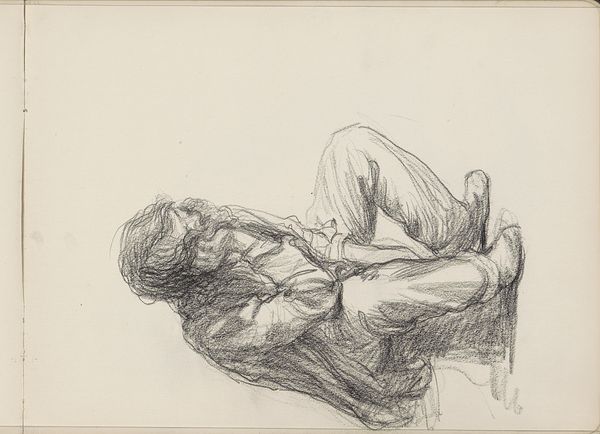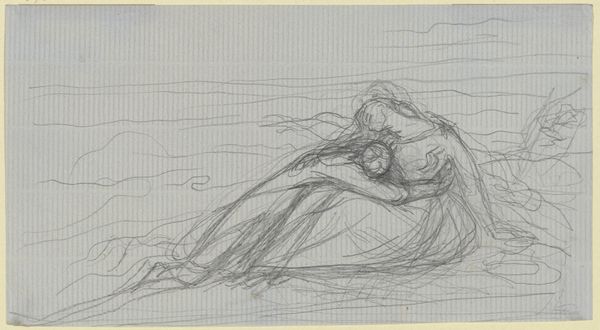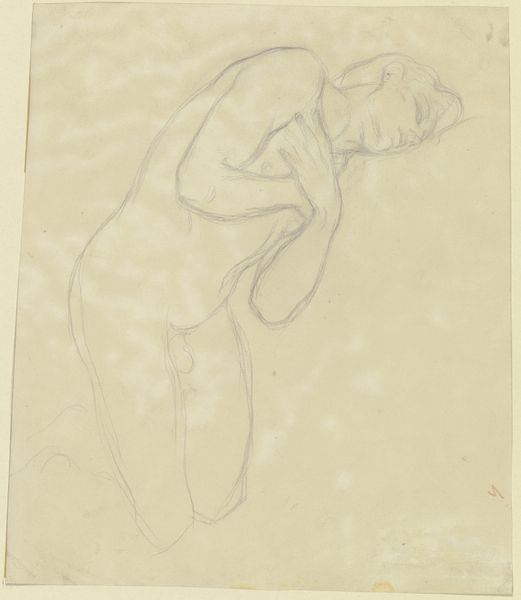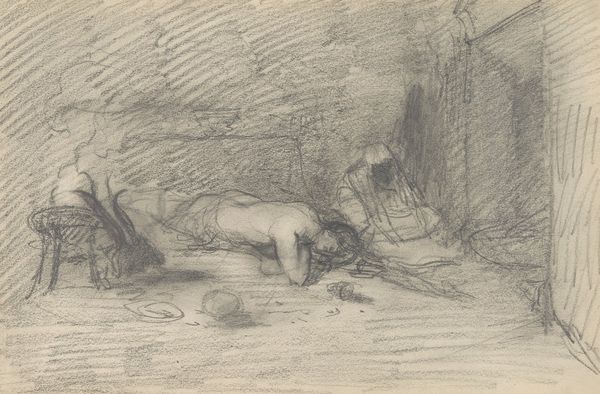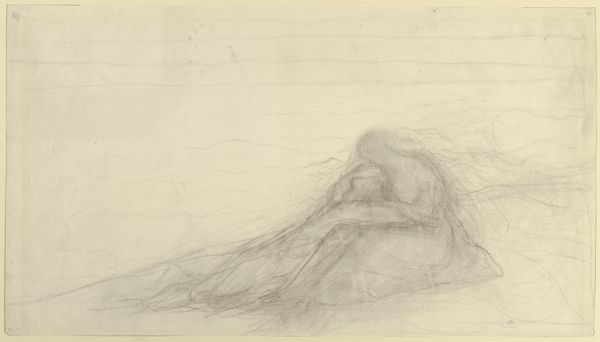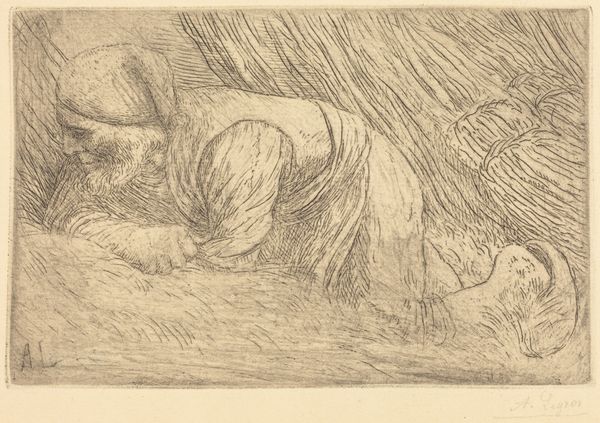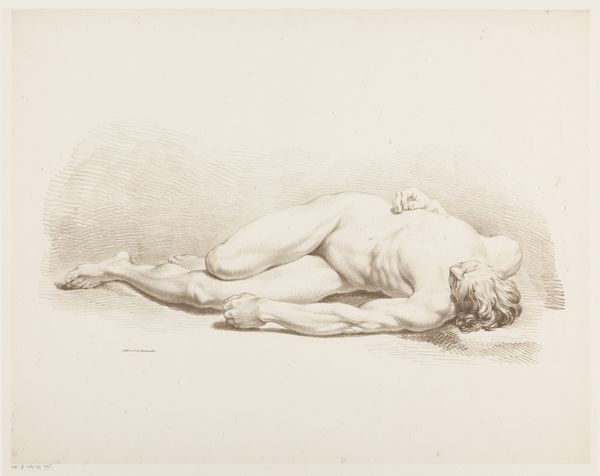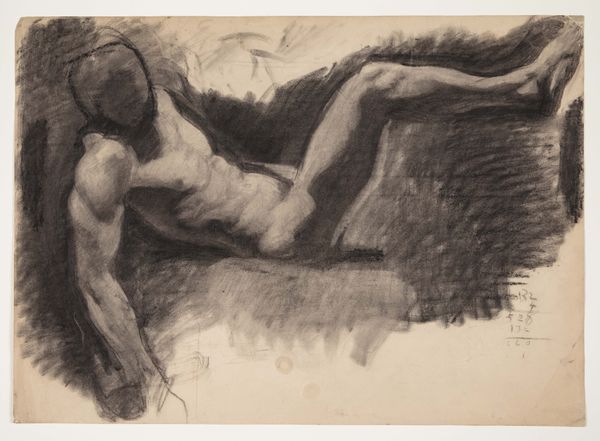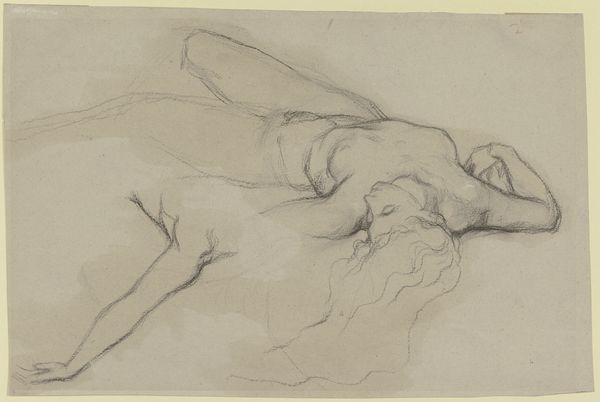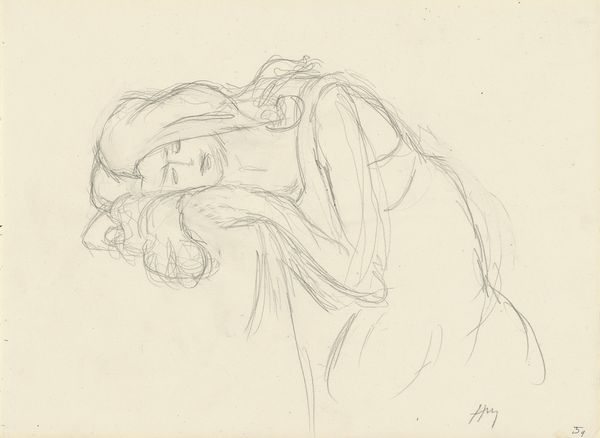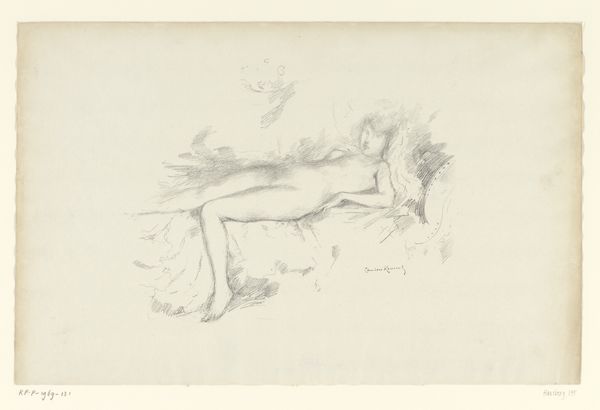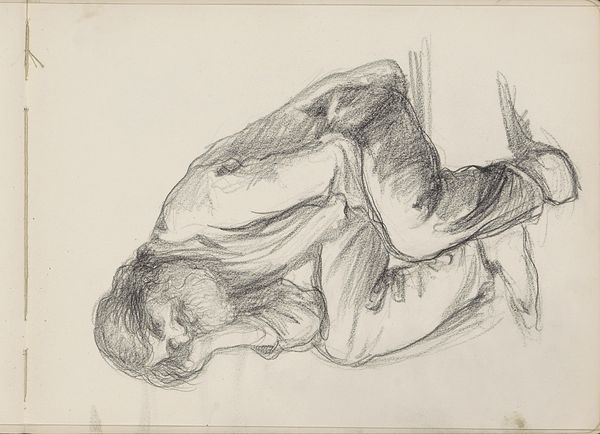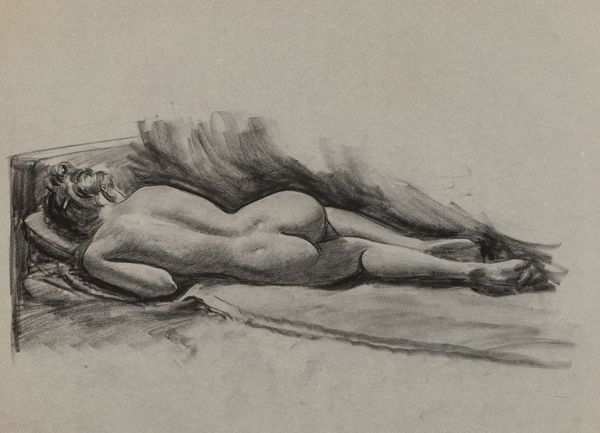
drawing, pencil
#
portrait
#
drawing
#
pencil sketch
#
pencil
#
nude
#
realism
Dimensions: 8 3/8 x 12 1/2 in. (21.27 x 31.75 cm) (image)
Copyright: Public Domain
Curator: We’re looking at "A Man," a drawing by Théophile Alexandre Steinlen from around 1910, housed here at the Minneapolis Institute of Art. Editor: It's…vulnerable, wouldn't you say? That stark white paper highlighting every sketched contour of fatigue and resignation. Curator: Definitely. Steinlen captured something very human in that hunched posture. The way the pencil barely kisses the paper in some areas and presses firmly in others. Do you think it resembles emotional turmoil? Editor: I'm struck by its sketch-like nature. This isn't about the finesse of rendering some grand, classical ideal, is it? It’s just humble graphite marking the page, and the image comes out from the tension and angle. Look how little he used. It feels almost confrontational, refusing any hint of ornamentation. Curator: He's known for his realist depictions of Parisian life, particularly the working class. You see a little of that pathos here. There's almost an activist edge to making a nude that feels neither idealized nor erotic, just…starkly present. It challenges the idea of whose body gets venerated in art. Editor: Absolutely. And it highlights the labor behind art itself. This is clearly a drawing prioritizing quick execution and economy of means, perhaps echoing the precarious lives Steinlen often depicted. The social context almost bleeds through the page. You can also get the impression this might be the end result of some strenuous manual task and some other mental conflict, both leaving their impression in lines. Curator: I wonder, could his work encourage viewers to acknowledge that our perception is skewed by what is prioritized as the main work in social and industrial production? Editor: Precisely. By focusing on materiality and process, Steinlen asks us to consider the entire network of creation and how artistic expression gets value based on who’s represented. Curator: Well, examining Steinlen’s study of an apparently unguarded figure has really emphasized for me the connection between artistic creation, the representation of labor, and the underlying social framework shaping both. Editor: It shows the politics in simple marks of pencil and how the means of art and means of production become inseparable at certain points in history.
Comments
No comments
Be the first to comment and join the conversation on the ultimate creative platform.

